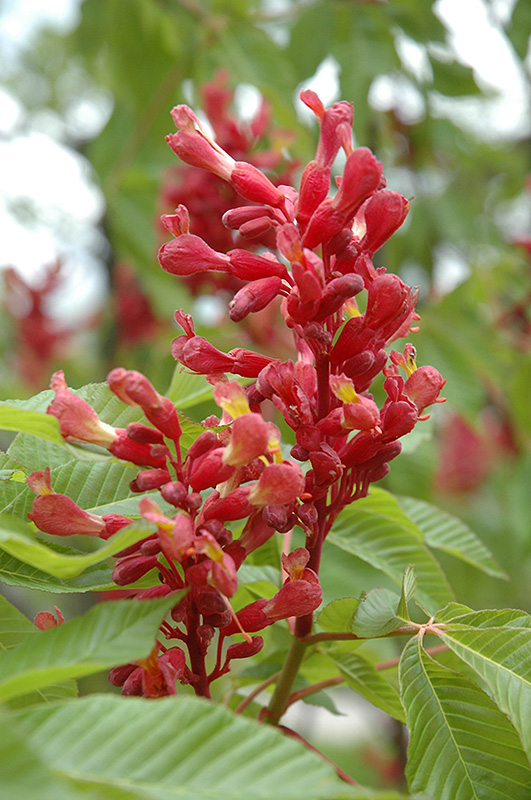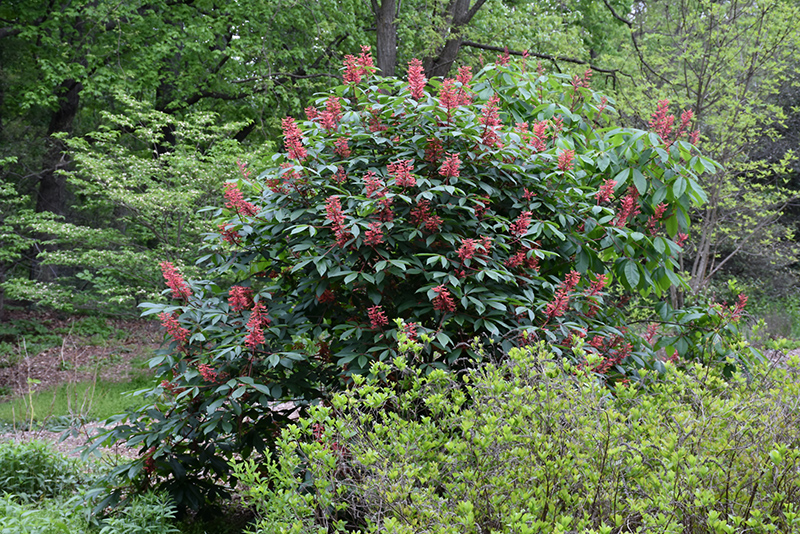>> Home
Height: 15 feet
Spread: 15 feet
Sunlight:
![]()
![]()
Hardiness Zone: 4
Description:
A very attractive shrub or small tree for general garden use with upright panicles of hummingbird-friendly, intensely red flowers in spring; will flower well in part shade; glossy, disease resistant leaves; water well during dry periods
Ornamental Features
Red Buckeye features showy spikes of ruby-red flowers rising above the foliage from early to mid spring. It has dark green deciduous foliage. The palmate leaves do not develop any appreciable fall color.
Landscape Attributes
Red Buckeye is a dense deciduous shrub with a more or less rounded form. Its relatively coarse texture can be used to stand it apart from other landscape plants with finer foliage.
This is a relatively low maintenance shrub, and is best pruned in late winter once the threat of extreme cold has passed. It is a good choice for attracting squirrels and hummingbirds to your yard. It has no significant negative characteristics.
Red Buckeye is recommended for the following landscape applications;
- Accent
- Mass Planting
- General Garden Use
- Naturalizing And Woodland Gardens
Planting & Growing
Red Buckeye will grow to be about 15 feet tall at maturity, with a spread of 15 feet. It has a low canopy with a typical clearance of 2 feet from the ground, and is suitable for planting under power lines. It grows at a medium rate, and under ideal conditions can be expected to live for 60 years or more.
This shrub does best in full sun to partial shade. It prefers to grow in average to moist conditions, and shouldn't be allowed to dry out. It is not particular as to soil type or pH. It is somewhat tolerant of urban pollution. Consider applying a thick mulch around the root zone in winter to protect it in exposed locations or colder microclimates. This species is native to parts of North America.

